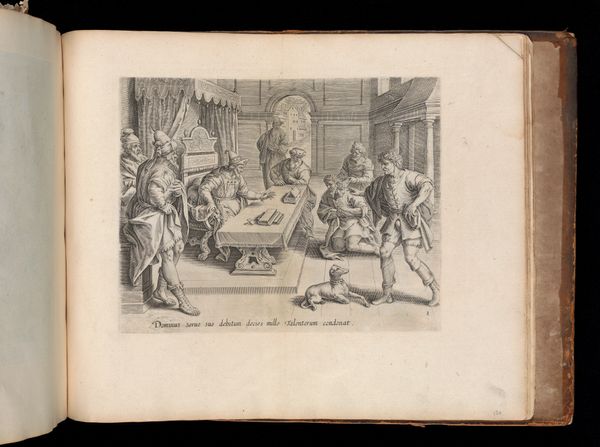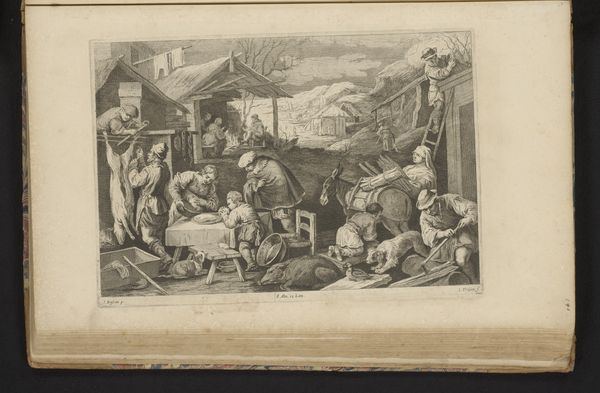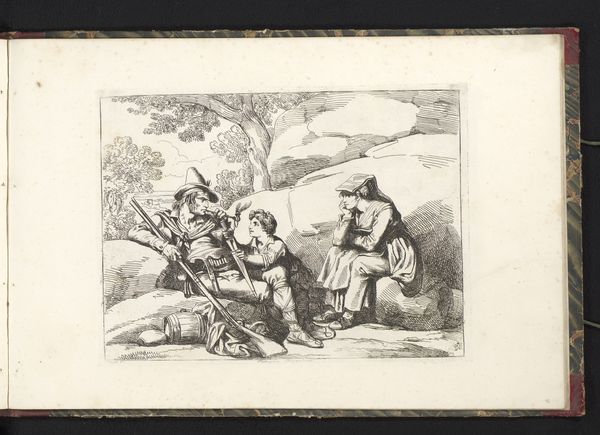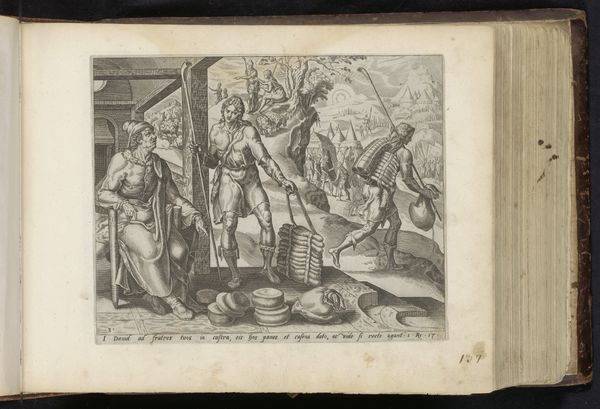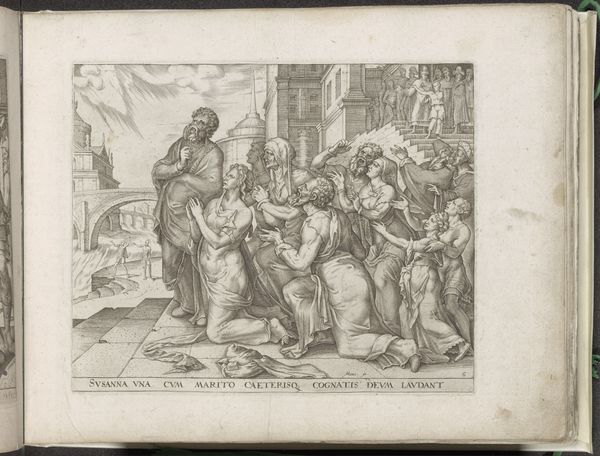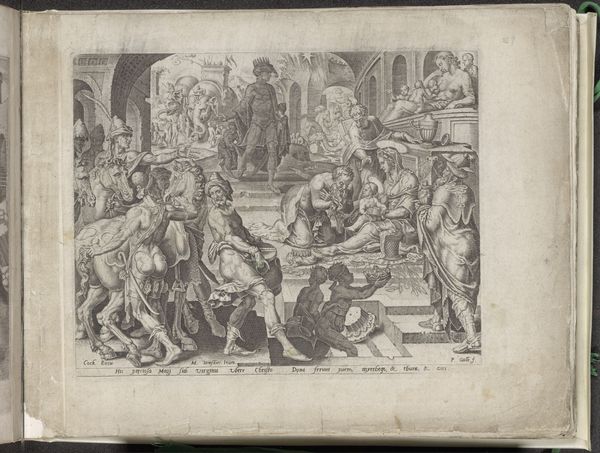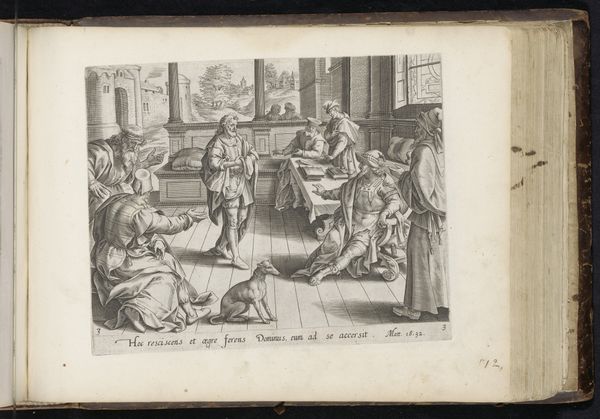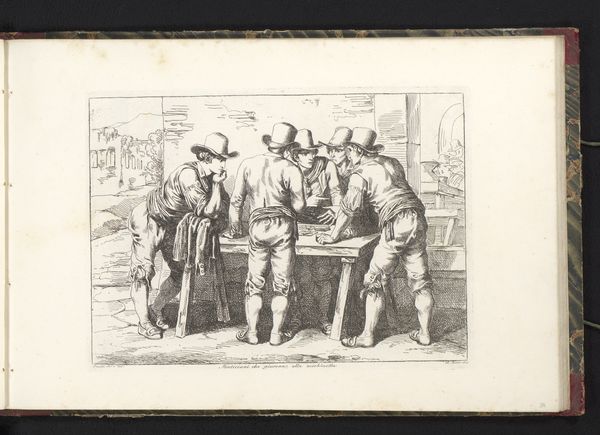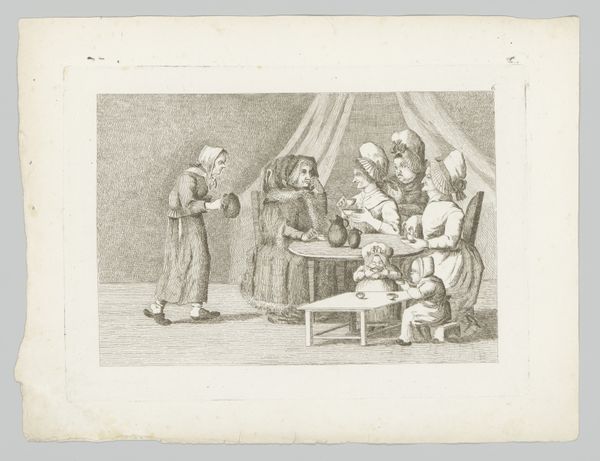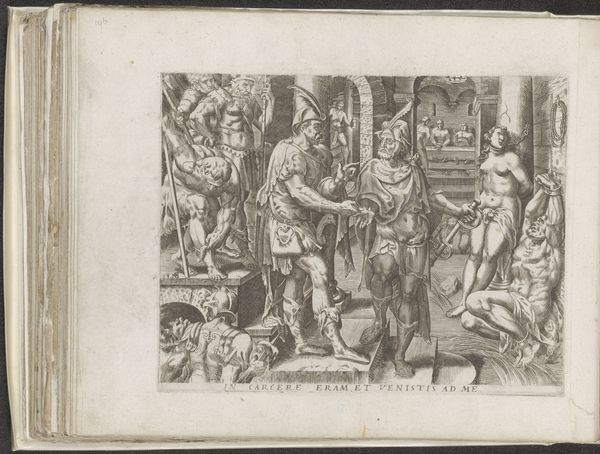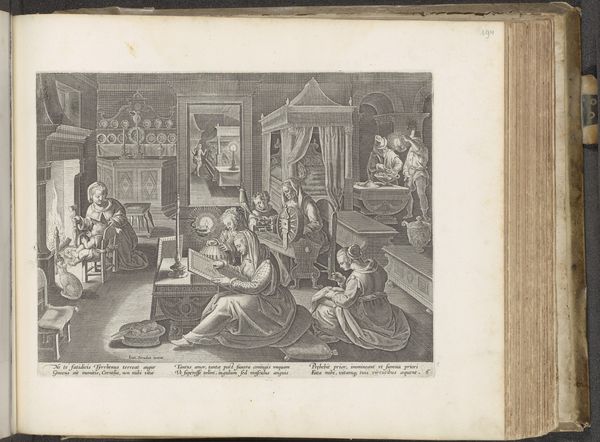
Il vero modo et ordine per dissegnar tutte le parti et membra del corpo humano. 1608
0:00
0:00
drawing, print, etching, ink
#
drawing
#
pen drawing
# print
#
etching
#
perspective
#
figuration
#
ink
#
genre-painting
#
academic-art
#
italian-renaissance
#
italy
Dimensions: 6 3/4 x 8 13/16 x 1/2 in. (17.15 x 22.38 x 1.27 cm) (closed)
Copyright: Public Domain
Odoardo Fialetti created this unbound book of prints, “The True Method and Order for Designing All the Parts and Limbs of the Human Body,” around the turn of the 17th century. The prints were made using etching, a printmaking technique that uses acid to corrode a design into a metal plate. The crisp lines of the etching beautifully capture the energy of a busy artist's workshop. Note the figure studies, the artist working at his easel, and the sculptures scattered throughout. The etching process itself, with its reliance on skilled labor, is an integral part of the art object. It democratized the circulation of images and ideas, reflecting broader social shifts in the 17th century. Consider how Fialetti's choice of etching, rather than painting or sculpture, allowed for the wider dissemination of his artistic vision. The book format invites a tactile engagement, more akin to craft than the traditional fine arts, challenging our assumptions about artistic value and originality.
Comments
minneapolisinstituteofart about 2 years ago
⋮
Drawing manuals like this work were common teaching tools for artists and amateurs learning to draw in the 16th and 17th centuries. This model book, comprising 43 etchings, is by Odoardo Fialetti, a painter and printmaker active in Venice. It was published in 1608 as an expanded, more systematic edition of an earlier book. As the title page explains, the work presents "every part of the human body divided into many pieces." Progressing from the head, the plates depict isolated body parts—eyes, ears, noses, hands, arms, feet, legs, torsos—providing aspiring draftsmen with patterns to copy to learn the art of figure drawing as well as conventions of foreshortening. There is also a series of plates with character heads that depict a range of ages, hair styles, and facial hair, and show the heads from different viewpoints. The final two etchings of the book are by the Venetian artist Palma Giovane, executed presumably under Fialetti's guidance, and depict religious scenes, Virgin and Child with Saints and Christ Among the Doctors.
Join the conversation
Join millions of artists and users on Artera today and experience the ultimate creative platform.
